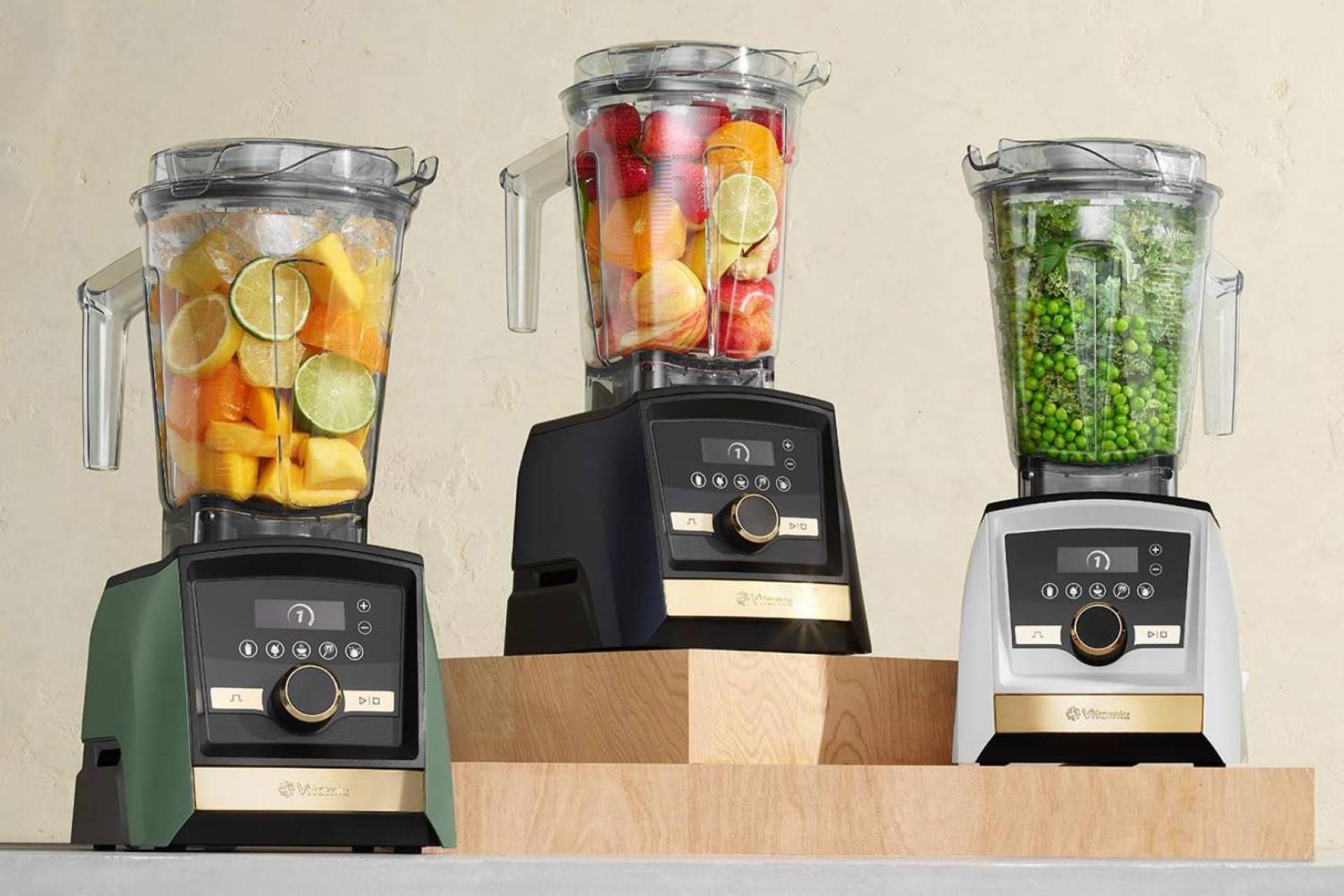Decisions, decisions.


Blenders have become an indispensable part of the everyday kitchen—and can do much more than just whip up a morning smoothie with them. From blending creamy soups and crafting homemade nut milks to pureeing baby food and pulsing fresh salsas, the blender is up for a wide range of culinary tasks.
This culinary powerhouse has evolved into a necessity for both novice cooks and seasoned chefs alike. But with a myriad of models boasting various features and functions, it’s easy to feel lost in a sea of options.
In this guide, discover the different types of blenders, explore features and functions and learn key factors to consider so you can confidently pick the one that best fits your cooking style and needs.
Hungry for more? From immersion blenders to powerhouse smoothie-making machines, we’ve got the perfect blender for all your needs, from brands like Vitamix, Breville, Zwilling and more!
Blenders come in various types, each designed to cater to different blending needs and kitchen setups. Understanding the types available will help you make a more informed choice.
Personal blenders: Compact and convenient, personal blenders are perfect for those on the go. Ideal for single servings, they’re great for smoothies and shakes.
Immersion blenders: Also known as hand blenders, these are your best friends for pureeing soups right in the pot or whipping up a quick sauce. Immersion blenders offer ease of use and minimal cleanup, making them a handy tool for quick tasks.
Conventional blenders: The most common type found in kitchens, conventional blenders are versatile and suitable for a range of tasks from crushing ice to making smoothies. With a variety of settings, they balance functionality and affordability.
High-performance blenders: For those who take their blending seriously, high-performance blenders like Vitamix and Breville blenders offer unrivaled power and durability. They can handle tough ingredients and offer a range of settings for precise control.
Food processors and blenders are both common kitchen appliances, but they serve different purposes and are designed for different types of food preparation tasks.
While both appliances can perform some overlapping tasks, blenders are generally best for blending liquids and creating smooth mixtures, whereas food processors are more suited for handling solid foods and performing a variety of chopping, slicing and grating tasks.
Some advanced blenders feature attachments that allow them to perform both blending and basic food processing tasks, offering a multifunctional solution in one appliance (more on this below).
From power and speed to capacity and ease of cleaning, let’s explore the essential features to consider, ensuring you choose a blender that not only performs well but also fits seamlessly into your daily routine.
Power: Measured in watts, higher power means more blending muscle. If you’re looking to crush ice or blend tough ingredients like nuts, aim for a higher wattage.
Speed Settings: Versatility is key. Multiple speed settings allow for greater control over the texture of your blend. Lower speeds are great for chopping or mixing, while higher speeds are ideal for creating smooth purees or blending hard ingredients.
Pulse function: This feature offers a short burst of power for chopping and prevents over-processing.
Capacity: Consider the size of the blender jar. If you’re blending for a family or meal prepping, larger capacities will serve you better.
Material: Blender jars come in glass or plastic. Glass is heavier and odor-resistant, while plastic is lightweight and shatterproof.
Noise level: Some blenders are designed to operate more quietly, an important consideration if noise is a concern in your household.
Blade design: Most high-quality blender blades are made of stainless steel, which is durable, resistant to rust and maintains sharpness over time. Some blenders have removable blades for easy cleaning, while others have fixed blades that are less prone to leakage but can be more challenging to clean thoroughly.
Additional attachments and accessories: Some blenders come with extra jars, interchangeable blades or specific attachments for tasks like grinding or dough making.
When it comes to selecting the best blender, there are several key factors to consider to ensure you get the appliance that best fits your lifestyle and culinary needs. Here are a few things to keep in mind:
What wattage should I look for in a blender?
For most household tasks, a blender with 500 to 800 watts should be sufficient. If you need to blend harder substances like ice or nuts, look for blenders with 1000 watts or more.
Can I put hot liquids in a blender?
Caution is needed when blending hot liquids as they can create pressure inside the blender. Use a blender that specifies it’s safe for hot liquids and always start on a low speed, opening the lid slightly or using a vented lid to release steam.
Is a more expensive blender worth the investment?
Higher-priced blenders often offer more power, durability and versatility. If you plan to use your blender frequently or for heavy-duty tasks, investing in a high-quality model can be worthwhile.
Can a blender replace a food processor?
While blenders and food processors have some overlapping functions, they are not entirely interchangeable. Blenders are best for liquid-based tasks while food processors are suited for more solid or dough-based tasks.
How do I clean my blender effectively?
Most blenders are easy to clean by blending warm water with a drop of dish soap. For stubborn residue, disassemble the parts and wash them individually. Always follow the manufacturer’s cleaning instructions.
Can all blenders crush ice?
Not all blenders are designed to crush ice. Check the manufacturer’s guidelines; generally, blenders with at least 600 watts of power and specifically designed blades can handle ice.
Are glass or plastic blender jars better?
Glass jars are heavier and don’t retain odors or stains, but they can break if dropped. Plastic jars are lighter and shatter-resistant but may absorb odors and stains over time.
What safety features should I look for in a blender?
Look for features like nonslip feet, a secure lid, protection from overheating and a safety lock that prevents the blender from operating if assembled incorrectly.
Hungry for more? From immersion blenders to powerhouse, smoothie-making machines, we’ve got the perfect blender for all your needs, from brands like Vitamix, Breville, Zwilling and more!
JOIN THE CONVERSATION